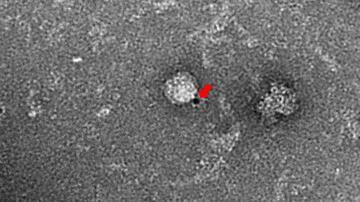Hepatitis E – A multi-facetted infection
In this collaborative project, DZIF scientists are investigating new pathophysiological, clinical and epidemiological aspects as well as therapeutic options for infections with the hepatitis E virus.
Infections with the hepatitis E virus (HEV) occur worldwide. While HEV genotypes 1, 2 and 4 mainly exist in the tropical regions, HEV genotype 3 prevails in Germany. This genotype is usually transmitted from animals to humans, for example through consumption of undercooked pork or game meat. Most HEV infections are asymptomatic and only a minority of patients develops symptomatic hepatitis E with elevated liver enzymes. In individual cases, a HEV infection can become life threatening. Of note, immunosuppressed individuals can develop chronic HEV infection which may progress to liver cirrhosis. Reducing immunosuppression can cure some of these patients. Therapy with ribavirin is successful for the majority of the remaining patients, however, for some there is no effective alternative treatment option.
Studying HEV forms the basis of fighting
hepatitis E
Public awareness for hepatitis is rising as more and more cases of the disease are being reported. HEV-related diseases may affect organs other than the liver such as the central nervous system or the kidneys. This may occur either during liver infection or afterwards. The DZIF scientists aim at understanding pathophysiological, clinical and epidemiological aspects of these so-called "extrahepatic manifestations".
The scientists also evaluate antiviral effects of new drug candidates so as to improve the treatment of acute and chronic HEV infection and to develop new therapeutic approaches against HEV infection with or without extrahepatic manifestation. To better understand the disease, a DZIF HEV registry is currently being set up. It documents various clinical parameters of individual HEV infection cases such as age, sex, laboratory values, level of HEV viral load, clinical course and cure as well as extrahepatic manifestations.



